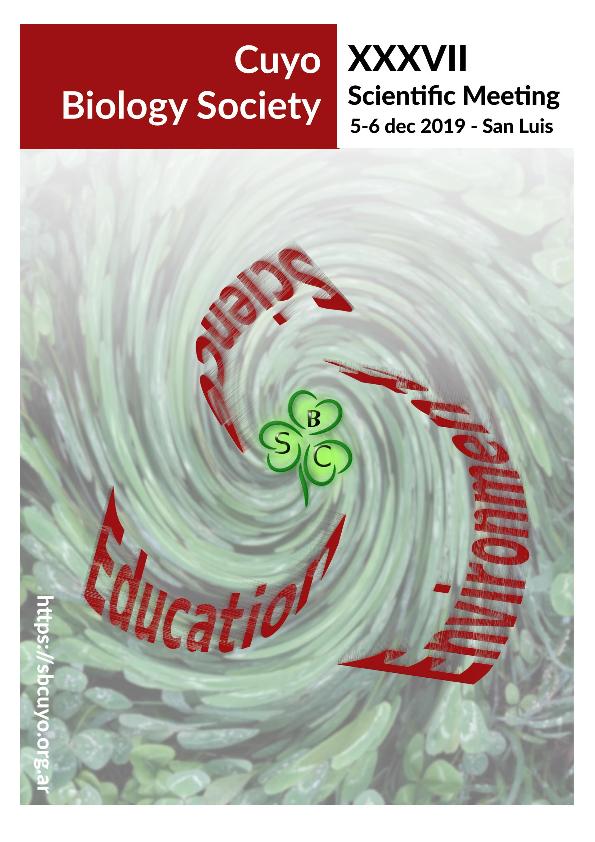Mostrar el registro sencillo del ítem
dc.contributor.author
Escudero, D. R.
dc.contributor.author
Isaguirre, Andrea Celeste
dc.contributor.author
Moyano, Mario Franco

dc.contributor.author
Moglia, Marta Matilde

dc.date.available
2023-08-02T17:06:03Z
dc.date.issued
2019
dc.identifier.citation
A novel method for heavy metals determination in aerobiological samples.; XXXVII Congreso de la Sociedad de Bilogía de Cuyo; San Luis; Argentina; 2019; 39-40
dc.identifier.issn
0327-9545
dc.identifier.uri
http://hdl.handle.net/11336/206583
dc.description.abstract
Atmospheric air carries a big number of particles and environmental pollutants coming from anthropogenic activities, to which people are exposed. Metal pollution has been increasing rapidly over the past century in relation to the growth of the human population‟s contaminants production. Thus, aero particles such as pollen grains may contain various trace elements, and their amounts vary from one species to another. They can present traces of metals such as lead (Pb), barium (Ba), and manganese (Mn), which are among the most common air and soil contaminants, and they are considered toxic to living beings. In the present work, we propose a simple and fast method for the multielement determination of traces in aerobiological samples. The sample of aeroparticles was obtained with a volumetric Lanzoni sensor, which is located on the terrace of the National University of San Luis. This device allows the capture of particles suspended in the air with a week periodicity, and with a suction flow of 10 L of air/min, similar to the volume of air inhaled by the human lung. The pollen content was analyzed for three months with continuous aerobiological sampling, in the atmosphere of the San Luis city, Argentina. Aerobiological samples were observed and readied with an optical microscope at 400X and they were identified through palynological atlases and with the palynotheque belonging to Aerobiology´s laboratory. For multielement determination, a mass spectrometer with inductively coupled plasma (ICP-MS) was used. The aeroparticle samples were subjected to acid digestion at 90°C for 1 h. The conditions of analytical determination were optimized. The nebulizer gas flow used was 0.85 L/min and the RF power was 1200 W. The pollination period studied was from February to April of 2019. with other pollen types, Chenopodiaceae and Artemisia were the most abundant in the atmosphere of San Luis during the analysis period. Linear regression models were used to analyze the metals vs. pollen content. Positive associations were found between Mn and Chenopodiaceae (r=0.86, P=0.0015). In the same sense, it was observed positive associations between Pb and Chenopodiaceae (r=0.78, P=0.0026). The maximum concentration values for Chenopodiaceae (30 pollen grains/m3 of air) were recorded in March, while the maximum values for Artemisia (11 pollen grains/m3 of air) were recorded in February. In this study, during the pollination period, an increase in the elemental content was observed. Therefore, the metals could be transported by aero particles such as pollen grains increasing respiratory disorders.
dc.format
application/pdf
dc.language.iso
eng
dc.publisher
Sociedad de Biología de Cuyo
dc.rights
info:eu-repo/semantics/openAccess
dc.rights.uri
https://creativecommons.org/licenses/by-nc-sa/2.5/ar/
dc.subject
Pollen
dc.subject
Trace elements
dc.subject
Metals
dc.subject
ICP-MS
dc.subject.classification
Otras Ciencias Biológicas

dc.subject.classification
Ciencias Biológicas

dc.subject.classification
CIENCIAS NATURALES Y EXACTAS

dc.title
A novel method for heavy metals determination in aerobiological samples.
dc.type
info:eu-repo/semantics/publishedVersion
dc.type
info:eu-repo/semantics/conferenceObject
dc.type
info:ar-repo/semantics/documento de conferencia
dc.date.updated
2022-11-01T23:12:58Z
dc.identifier.eissn
1667-5746
dc.journal.pagination
39-40
dc.journal.pais
Argentina

dc.journal.ciudad
San Luis
dc.description.fil
Fil: Escudero, D. R.. Universidad Nacional de San Luis. Facultad de Química, Bioquímica y Farmacia; Argentina
dc.description.fil
Fil: Isaguirre, Andrea Celeste. Universidad Nacional de San Luis. Facultad de Química, Bioquímica y Farmacia; Argentina
dc.description.fil
Fil: Moyano, Mario Franco. Consejo Nacional de Investigaciones Científicas y Técnicas. Centro Científico Tecnológico Conicet - San Luis. Instituto de Química de San Luis. Universidad Nacional de San Luis. Facultad de Química, Bioquímica y Farmacia. Instituto de Química de San Luis; Argentina
dc.description.fil
Fil: Moglia, Marta Matilde. Universidad Nacional de San Luis. Facultad de Química, Bioquímica y Farmacia; Argentina
dc.relation.alternativeid
info:eu-repo/semantics/altIdentifier/url/https://sbcuyo.org.ar/wp-content/uploads/2021/07/2020-XXXVII-Scientific-Meeting-of-the-Cuyo-Biology-Society2.pdf
dc.conicet.rol
Autor

dc.conicet.rol
Autor

dc.conicet.rol
Autor

dc.conicet.rol
Autor

dc.coverage
Nacional
dc.type.subtype
Congreso
dc.description.nombreEvento
XXXVII Congreso de la Sociedad de Bilogía de Cuyo
dc.date.evento
2019-12-05
dc.description.ciudadEvento
San Luis
dc.description.paisEvento
Argentina

dc.type.publicacion
Journal
dc.description.institucionOrganizadora
Sociedad de Biología de Cuyo
dc.source.revista
Biocell

dc.date.eventoHasta
2019-12-06
dc.type
Congreso
Archivos asociados
